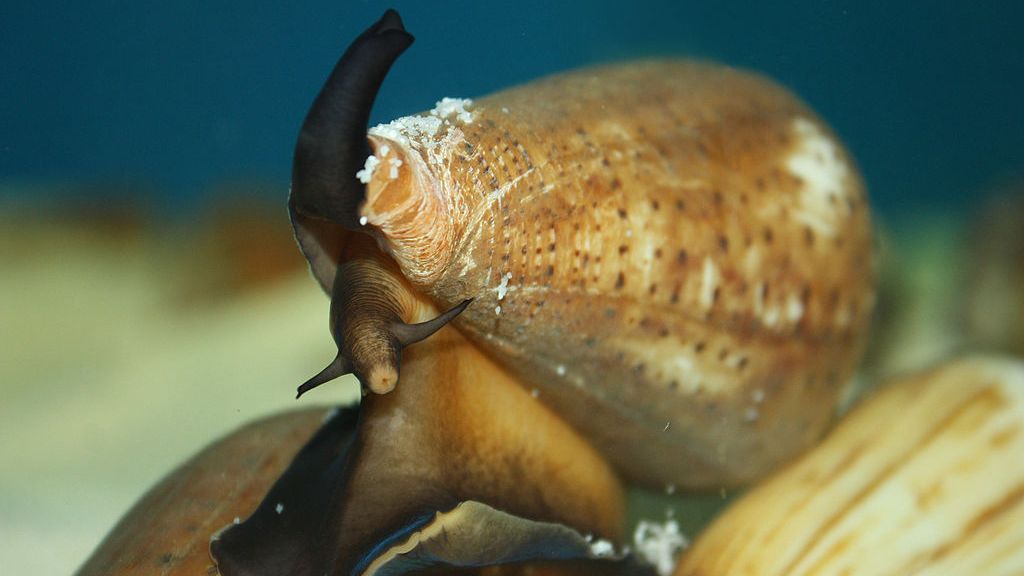
A venomous sea snail could hold the key to developing more effective painkillers with a reduced risk of addiction, researchers say.
Deadly venom produced by cone snails has occasionally killed humans, and there is no antitoxin available.
However, a team led by researchers from the University of Glasgow is trying to learn more about the poison produced by these snails, which are predatory marine animals found in warm seas and oceans throughout the world.
The cone snail’s venom contains chemicals called conotoxins — highly potent neurotoxic peptides — which it uses to paralyze its prey by blocking parts of their nervous systems. This is often fatal to animals but rarely fatal to humans.

Modified peptides based on the venom could form the basis of future drugs capable of safely blocking pain receptors in the human body.
The researchers hope their project will lead to the development of the first-ever treatments for conotoxin poisoning.
Experts in conotoxin chemistry and protein biochemistry from the University of Glasgow are teaming up with machine learning and artificial intelligence researchers from the University of Southampton to better understand how the cone snail’s venom works to affect human muscles.
Together with colleagues at the Defence Science and Technology Laboratory, they will investigate how conotoxin peptides are structured at the molecular level.
They will then build on that knowledge to synthesize new peptides that show promise for interacting with a particular type of receptor in the human nervous system, known as nicotinic acetylcholine receptors, or nAChRs.
Using advanced computer modeling techniques, they will then run simulations to determine the peptides’ effectiveness in binding with muscle receptors.

Andrew Jamieson, of the University of Glasgow’s School of Chemistry, is the project’s principal investigator and will be leading the research at the University’s new Mazumdar-Shaw Advanced Research Centre.
“The cone snail might seem like an unlikely prospect for breakthroughs in drug discovery, but the conotoxins it produces have a lot of intriguing properties, which have already shown promise in medicine.
“This project brings together some of the U.K.’s leading researchers across a wide range of disciplines to learn about how conotoxins work.
“Then we’ll look at ways we can engineer new analogues to investigate how effective they might be as novel drugs for a range of medical applications.
“Those new molecules’ ability to interact with nicotinic acetylcholine receptors could lead to new forms [of] muscle relaxants for anesthesia or painkillers which are just as effective as opioids but don’t have the same associated potential for addiction. It’s an exciting project, and we’re looking forward to getting started,” said Jamieson.
The $2.5m (£1.9m) project is supported by funding from the Defense Threat Reduction Agency, part of the U.S. Department of Defense.
Edited by Siân Speakman and Kristen Butler
Recommended from our partners
The post Venomous Sea Snail Could Be Key To More Effective Painkillers With Lower Risk Of Addiction appeared first on Zenger News.











